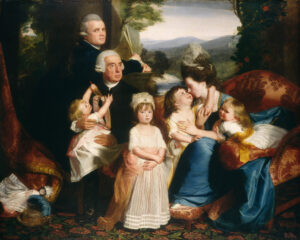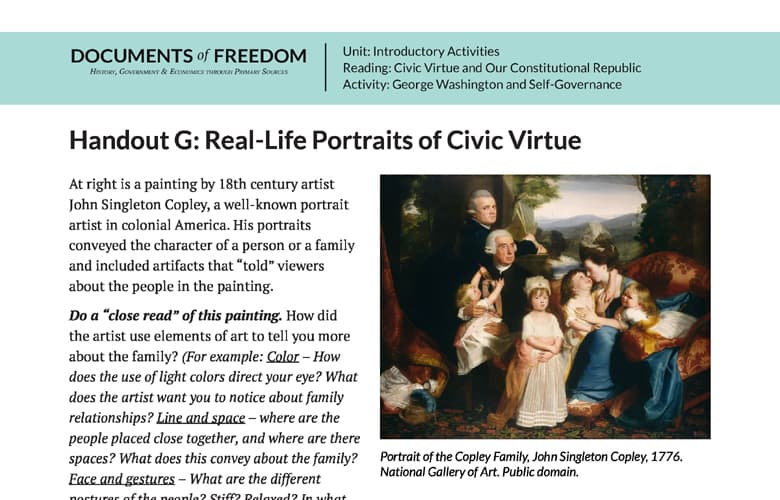Handout G: Real-Life Portraits of Civic Virtue
Handout G: Real-Life Portraits of Civic Virtue
Below is a painting by 18th century artist John Singleton Copley, a well-known portrait artist in colonial America. His portraits conveyed the character of a person or a family and included artifacts that “told” viewers about the people in the painting.

Portrait of the Copley Family, John Singleton Copley, 1776. National Gallery of Art. Public domain.
Do a “close read” of this painting. How did the artist use elements of art to tell you more about the family? (For example: Color – How does the use of light colors direct your eye? What does the artist want you to notice about family relationships? Line and space – where are the people placed close together, and where are there spaces? What does this convey about the family? Face and gestures – What are the different postures of the people? Stiff? Relaxed? In what direction is each person facing? What expressions are on their faces? What does this communicate to the viewer?)
What other details (artifacts, other visual clues) illustrate character traits, location, or other details about the family? (For example: What is placed in the lower left corner of the painting? What is in the hand of the child reaching up to the father? What does this tell you about the family?)
Work with your assigned group to create and photograph a “visual tableau” in which you pose like one of Copley’s portraits. Your portrait’s composition should be similar to a Copley portrait, may be of an historic or contemporary figure, and must include props that illustrate either self-governance or another of the civic virtues discussed in class. Clothing, props, and background may reflect any time period as long as they help viewers to “read” the civic virtue represented by the portrait you create.
In addition, write a paragraph, in the form of a museum label or caption, which explains the portrait and the civic virtue it illustrates. It should be formal, written close-read of your “painting.”
